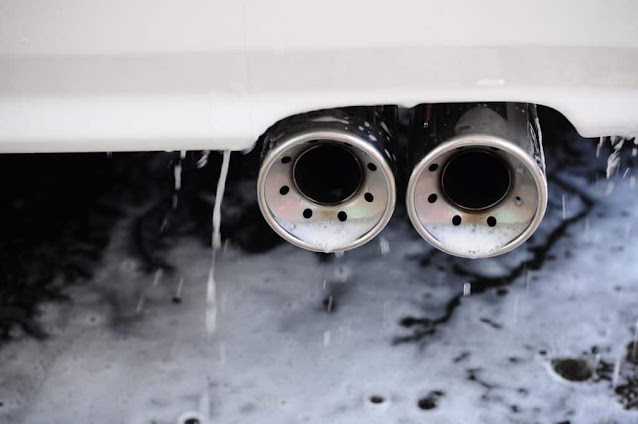Causes Of Exhaust Pipe Liquid Emission?
The function of exhaust pipes is to expel the by-product gases produced from the combustion in the engine. But there are cases in which you will notice the expulsion of water from the same pipe. It may raise serious concern in the driver’s mind, but it has no significant negative repercussions on the car. But letting it be can cause a threat to the car. Let’s jump into the key reasons why the exhaust pipes emit water instead of gas. Many car owners think that installing performance exhausts can cause water leakage from the exhaust pipe. It is not true, because performance exhausts do not infect any part of the exhaust system. For any car, be it BMW M140i or other, performance exhaust does nothing but boosts its car power.
1- Water Condensation:
Condensation is a process of conversion of water from its gaseous state to the liquid state. The internal combustion process produces various by-products. Some of the main by-products are carbon dioxide, nitrogen, and water vapors. When the engine is given some time to cool down, some of these gasses exit the combustion chamber and make their way into the exhaust system. This process results in water condensation. The more engine cools down, the more water droplets expelled from the exhaust pipe. Thence, a little amount of emits out of the exhaust pipe. Therefore, it is normal if water comes out from the exhaust system due to condensation.
2- Catalytic Converter:
The catalytic converter is a device in the exhaust system that is responsible for reducing toxic gasses. Actually, It compresses the size of gasses before they emit out of the exhaust pipe. It employs redox(oxidization and reduction) reactions. These reactions target to convert harmful gases into less toxic by-products like water and gasses. These reactions result in forming water. So, the water droplets coming out of the exhaust system can be a result of the catalytic conversion process. Therefore, the catalytic converter is a normal cause of water discharging from the exhaust pipe.
3- Engine Heat:
If you live in a cold climatic area, you will commonly notice water coming out of the exhaust tail. In cold temperatures, you need to warm up the car before it works properly. The warm-up is necessary for the car to flow fuel in the vehicle and lubricate each component. As the car warm-ups, it builds excessive heat in the car. Both the engine and the exhaust system gain excessive heat. The water vapors formed as a result of internal combustion will convert into the water due to the cold outside temperature. The water emitted out of the car due to engine heat is a normal cause. The problem will settle up as the temperature becomes normal.
4- Worn Out Pistons:
there must be a problem with pistons and rings if you notice an emission of smoke with water. The other indicators of worn-out pistons are a burning and sweet smell inside the cabin. It is a serious problem that you should never outlook. You must avoid driving a car in this state and take it to a mechanic for repair. Worn-out pistons will not emit water unless there is a faulty in the head gasket or there is a residual condensation in the exhaust system.
5- Head Gasket Failure:
Head gasket is a cover between the engine block and cylinder. It prevents coolant from entering the engine. If the head gasket is blown out, it will allow the coolant to enter the engine, and that may emit white smoke. So, if the exhaust pipe emits white smoke with water, there must be a problem with the head gasket. It is a serious cause that no one should neglect.
Also Read: Common Causes of Overheating Car Engines

.jpg)


Comments
Post a Comment